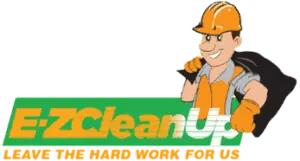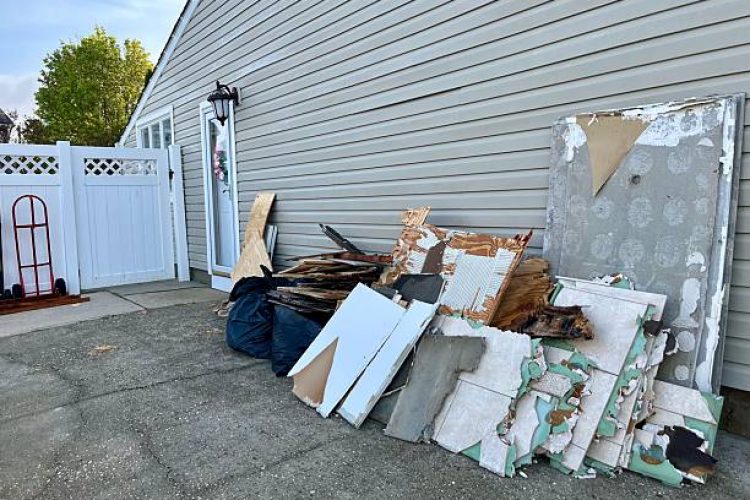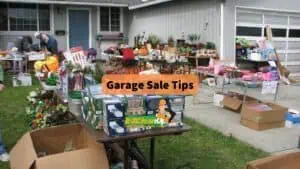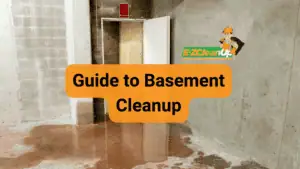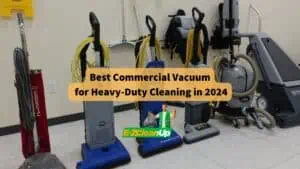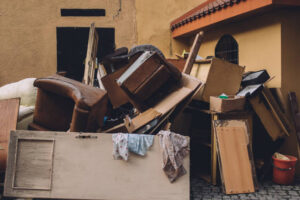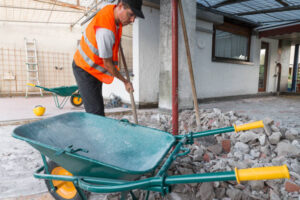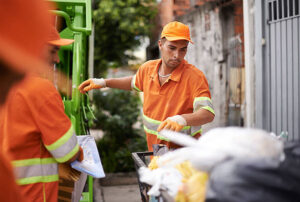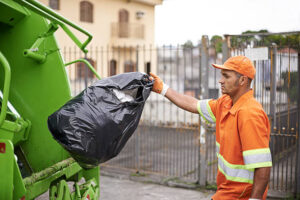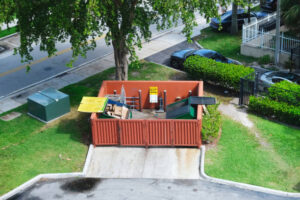Foreclosed properties often come with an unexpected challenge: mountains of abandoned belongings, trash, and debris left behind by previous occupants. Whether you’re a real estate investor, property manager, or bank representative, understanding how to efficiently handle junk removal is crucial for getting the property market-ready. This comprehensive guide will walk you through everything you need to know about foreclosure cleanouts.
What Is a Foreclosure Cleanout?
A foreclosure cleanout refers to cleaning out foreclosed properties, usually involving the removal of old furniture and appliances as well as junk and other types of debris left on the property by the previous owners. Unlike regular cleaning jobs, foreclosure cleanouts involve removing graffiti, removing trash and left behind personal belongings, and repairing other damage done to the property.
The scope of work can vary dramatically depending on the property’s condition. Many foreclosed properties are often left with trash, abandoned furniture, and other belongings that the previous property owners failed to remove and dispose of.
Understanding the Scope: What to Expect
Before diving into the cleanout process, it’s essential to assess what you’re dealing with. The key is to see how much junk has been left behind and note if there’s anything that may require special attention.
Common items found in foreclosed properties include:
- Furniture and mattresses
- Large appliances (refrigerators, washers, dryers)
- Personal belongings and clothing
- Construction debris and old flooring
- Electronic waste
- General household trash
- Yard waste and debris
Safety Considerations You Can’t Ignore
Safety should be your top priority when handling foreclosure cleanouts. There are safety hazards to be aware of when tackling a large-scale residential or commercial building foreclosure cleanup, as hazardous materials may be involved.
Potential Hazards Include:
Structural Issues: Properties may have compromised structural integrity, making it dangerous to navigate or remove heavy items.
Hazardous Materials: Older homes may contain asbestos, lead paint, or other dangerous substances that require specialized handling.
Biological Hazards: Suit up with gloves, boots, and masks, and in extreme cases, call in biohazard remediation teams to handle contamination safely.
Chemical Dangers: Abandoned properties may contain chemicals, propane tanks, batteries, and other hazardous materials that require proper disposal.
Legal Considerations Before You Start
Before removing anything from a foreclosed property, understand your legal obligations. Depending on your location, state laws may require you to store abandoned property left behind by the former homeowner or tenant, with some states mandating a notice period before disposal.
Important steps include:
- Documenting all items found on the property
- Following state-specific notice requirements
- Consulting with a real estate attorney if needed
- Maintaining detailed records of disposal or donation
DIY vs. Professional Foreclosure Cleanout Services
DIY Approach
Taking the DIY route can save money upfront, but it comes with significant challenges:
Pros:
- Lower initial costs
- Complete control over the process
- Flexibility in scheduling
Cons:
- Extremely labor-intensive
- Requires proper equipment and disposal methods
- Safety risks without proper training
- Time-consuming
Renting a dumpster may be the most cost-effective method for medium to large-size home or commercial building cleanouts, but this DIY option requires a lot of manual labor on your part.
Professional Services
The biggest reason to hire a professional to handle foreclosure cleanout is safety, as heavy furniture, precarious placement, and properties that may no longer be structurally sound can present opportunities for danger, and a professional team has the skill, experience, and tools to do the job safely.
Benefits include:
- Trained professionals with proper equipment
- Licensed and insured services
- Faster turnaround times
- Proper disposal and recycling methods
- Reduced liability and safety risks
Step-by-Step Foreclosure Cleanout Process
1. Initial Property Inspection
The foreclosure cleaning process generally involves a thorough inspection of the property to determine the scope of the job, which also allows professionals to prepare the right tools and equipment.
Walk through every room, including:
- Attics and basements
- Garages and sheds
- Outdoor areas
- Crawl spaces
Document everything with photos and notes.
2. Create a Detailed Plan
The planning phase involves carefully laying out the work that needs to be done per room as well as planning out strategies for waste disposal.
Your plan should include:
- Room-by-room breakdown
- Timeline for completion
- Equipment and supplies needed
- Disposal methods for different item categories
- Team assignments if working with others
3. Gather Necessary Equipment
Essential tools and supplies include:
- Heavy-duty work gloves
- Safety goggles and masks
- Work boots with steel toes
- Dollies and hand trucks
- Trash bags (various sizes)
- Cleaning supplies
- Pry bars and hammers
- Dumpster rental or junk removal service scheduled
4. Execute the Cleanout
Usually, large and bulky items are the first to go, followed by general junk and other trash.
Work systematically:
- Start with large furniture and appliances
- Progress to smaller items
- Sort items into categories: trash, recyclables, donations, hazardous waste
- Clean as you go to identify additional issues
5. Proper Disposal Methods
Responsible disposal is crucial. All cleanout services should be environmentally friendly, taking great care to separate the collected garbage and belongings so that it doesn’t all end up in a landfill.
Disposal options:
- Donate: Furniture, appliances, and household items in good condition
- Recycle: Metal, electronics, paper, and cardboard
- Special disposal: Hazardous materials must go to designated facilities
- Landfill: Only for items that can’t be donated or recycled
6. Final Cleaning and Repairs
After removing items, any minor damages will be fixed and interior cleaning will take place. This includes:
- Deep cleaning all surfaces
- Removing graffiti or stains
- Minor repairs to walls, doors, and fixtures
- Addressing any lingering odors
Timeline: How Long Does It Take?
Generally, you should expect the foreclosure cleanout to take a few days, especially for larger properties, while for smaller properties or units such as apartments and condominiums, it may only take a few hours.
Factors affecting timeline:
- Property size
- Volume of debris
- Number of workers
- Accessibility issues
- Presence of hazardous materials
Cost Considerations
Foreclosure cleanout costs vary widely based on several factors:
DIY Costs:
- Dumpster rental: $300-$500 for 10-40 yard containers
- Equipment rental: $50-$200
- Disposal fees: Variable by location
- Your time and labor
Professional Service Costs:
Professional services typically price by volume and item type. Consider hiring a junk removal company, but keep in mind that some will not work on foreclosed properties. Always get multiple quotes and verify the company’s experience with foreclosures.
Choosing the Right Junk Removal Company
When selecting a professional service, look for:
Experience with Foreclosures: Not all junk removal companies work on foreclosed properties, so verify their experience.
Licensing and Insurance: Ensure the company is fully licensed, bonded, and insured to protect yourself from liability.
Environmental Responsibility: Companies should work with local communities to recycle, donate, and reuse as much as possible.
Transparent Pricing: Get detailed written estimates with no hidden fees.
Reviews and References: Check online reviews and ask for references from previous foreclosure clients.
Quick Response Time: Call several days ahead of time if you need to hire a junk removal company or rent a dumpster to ensure availability.
Preparing the Property for Sale or Rental
Once the cleanout is complete, focus on making the property attractive to buyers or renters:
- Deep clean all surfaces, windows, and fixtures
- Make necessary repairs to increase property value
- Address curb appeal with landscaping and exterior cleaning
- Stage appropriately to help potential buyers envision the space
- Document the transformation with before and after photos
Common Mistakes to Avoid
Underestimating the Job: Foreclosure cleanouts generate massive waste volumes — don’t underestimate how much.
Skipping Legal Requirements: Failing to follow proper notice periods or documentation can lead to legal issues.
Ignoring Safety Protocols: Cutting corners on safety can result in injuries or health hazards.
Poor Disposal Practices: Illegal dumping or improper disposal can result in fines and environmental damage.
Not Getting Multiple Quotes: Always compare several service providers before committing.
The Environmental Impact
Responsible foreclosure cleanouts should prioritize environmental sustainability. While some items go to landfills, others are recycled or transported to recycling centers, and some items even go through repairs and then are either donated or reused.
Work with companies that:
- Prioritize donation and recycling
- Have established relationships with local charities
- Follow proper disposal regulations
- Minimize landfill contributions
Final Thoughts
Handling junk removal for foreclosed properties is a significant undertaking that requires careful planning, attention to safety, and often professional assistance. Whether you choose to tackle the job yourself or hire professionals, understanding the process, legal requirements, and best practices will help ensure a successful cleanout.
When a property faces foreclosure, it often requires a thorough cleanout to become market-ready, which entails not only cleaning and decluttering but also repairing any damages and ensuring the home is presented in the best possible light.
By following this guide, you’ll be well-equipped to transform a neglected foreclosed property into an attractive, market-ready asset. Remember, the investment you make in proper cleanout and preparation will pay dividends when it comes time to sell or rent the property.
References
- Dumpsters.com – You Bought a Foreclosed Home – Now What?
- Junk King – Foreclosure Cleanout Services
- Waste Removal USA – Foreclosure Cleanouts: An Essential Guide to Property Restoration
- Hometown Dumpster Rental – How to Efficiently Clean Up a Foreclosure or Eviction Property
- MSI – What Is A Foreclosure Cleanout Service?
